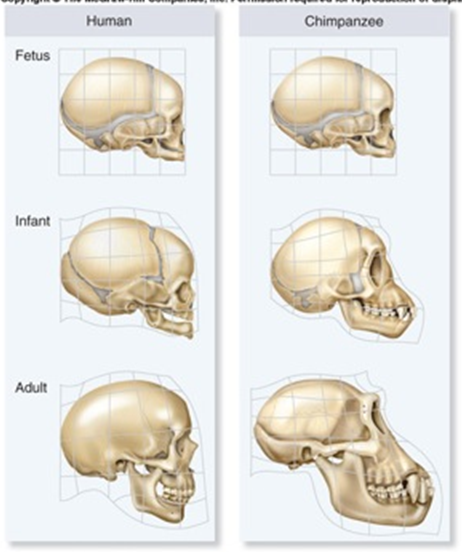Organogenesis
A. involves acrosomal reaction.
B. is the formation of the three germ layers.
C. involves failure of the organs to form.
D. is when tadpoles become frogs.
E. Arises from germ layer cells.
E. Arises from germ layer cells.
You might also like to view...
In order to conserve H2O, land plants will close stomata to minimize transpiration, but closing stomata lowers CO2 concentration in the leaf. Drought thus __________ because __________
A. lowers photosynthesis; photorespiration increases B. lowers photorespiration; photosynthesis increases C. lowers photosynthesis; H2O is not available D. increases photosynthesis; photorespiration increases E. increases photosynthesis; CO2 increases
Which of the following is recognized as a microbe capable of nitrification?
A. Hyphomicrobium spp. B. Purple nonsulfur bacteria C. Red photosynthetic bacteria D. Nitrosomonas europaea
The effects of allometric growth on head morphology in the human and chimpanzee

A. The human and chimp fetal skull are exactly the same, the human jaw development slows down after adulthood.
B. Heterochrony is occurring, the chimp jaws continue to develop at a faster rate than human jaws.
C. Paedomorphosis is occurring, the human jaw retains its small size while the chimp jaw continues to grow even in adulthood.
D. The nasal passages of the chimp are shortened due to reduced growth during fetal development while the nasal passages of the human grow through adulthood.
E. All of the choices are correct.
One hypothesis holds that complex organic compounds formed near deep-sea
a. silt mounds. b. hydrothermal vents. c. caverns. d. crevices. e. rock outcrops.